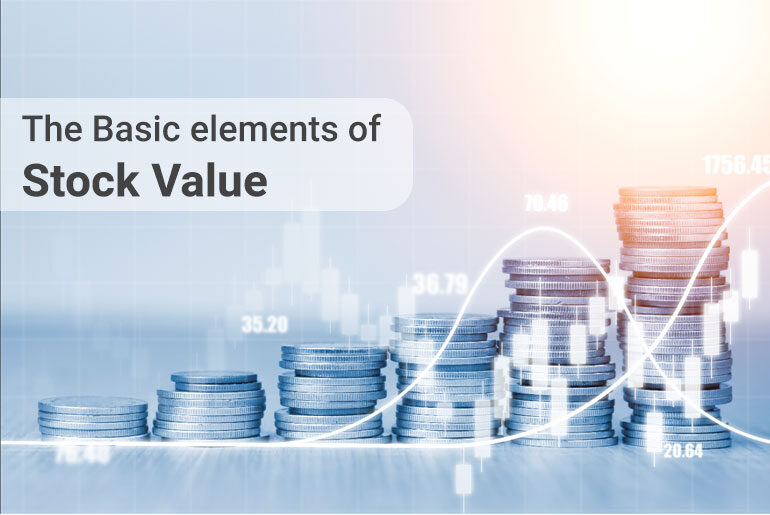There are many ways to find a stock valuation but today we discuss the 4 best financial ratios that can be used to find the best-estimated value of a stock. These 4 financial ratios are:
- Price to Book Ratio (P/B)
- Price-to-Earnings (P/E) ratio
- Price-to-Earnings growth (PEG) ratio
- Dividend Yield
1. Price to Book Ratio:
- P/B ratio compares a company’s Market Capitalisation or Market Value to its book value. Now you must be wondering, we know Market Capitalisation or Market value but what is Book Value? So it’s basically the total assets that a company have, you can consider it as:
Book Value = Total Assets – Total Liabilities
- This can always be found on the company’s balance sheets.
- In simple terms, you can say that if a company sells/liquidates all its assets and pays off all its debt, the value remaining would be the company’s value.
- Taking an example the book value of a steel company would be its Machinery, its equipment, its land, buildings that can be sold.
- this also includes stock holdings and bonds that the company possesses.
- Industrial companies tend to have a book value more on their physical assets. For FInance firms, this can fluctuate as per stocks.
- What can be called a better P/B? Any value under 1.0 is considered a good P/B value, this indicates a potentially undervalued stock.
- However, most of the value investors consider stocks with a P/B value under 3.0.
2. Price-to-Earnings (P/E) ratio:
- P/E is the ratio of a company’s share price to the company’s earnings per share.
- This is said to be one of the most important ratios and shall be looked carefully before finding a stock valuation.
- A stock can go up in its value without good earnings but only the P/E ratio can help you determine whether it can sustain its high position or not.
- As we have earnings in the denominators part, without the earnings as the backup the stock will eventually fall back down.
- P/E Ratio in layman’s language can be said as how much time a stock will take to pay back your investment if there is no change in the business.
- A stock trading at Rs. 30 per share with earnings of Rs. 3 per share has a P/E ratio of 10, which is sometimes seen as meaning that you’ll make your money back in 10 years if nothing changes in this specific business.
- Is a high P/E better than low P/E? First of all P/E should always be considered specifically for sectors and within then the stocks that come from those sectors,
- eg you should only compare the P/E ratios of FMCG stocks like ITC and HUL and not with other sector companies like Tata Motors or TCS.
- Now talking about a high P/E this could mean that a stock’s price is high relative to its earnings and can be said as an overvalued stock, conversely, a low P/E ratio says that the current price is low relative to earnings.
- A high P/E could mean that a stock’s price is high relative to earnings and possibly overvalued.
- Conversely, a low P/E might indicate that the current stock price is low relative to earnings and be said as a value stock or undervalued stock.
3. Price-to-Earnings growth (PEG) ratio:
- Sometimes it is seen that the P/E ratio alone is not enough in that case investors use the Price to Earnings Growth ratio.
- This ratio helps you to know the historical growth rate of the company’s earnings and thereby gives you an estimate about how much time you will take to make money in this stock.
- The formula is the P/E ratio divided by the Y-O-Y growth rate of its earnings.
- Is a lower PEG ratio better than a higher one? The lower value will always be better as you get a better deal from the stock’s future estimated earnings.
4. Dividend Yields:
- Last but not the least the Dividend Yields or Dividend Yield ratio is nothing but a financial ratio.
- that shows how much a company pays out in dividends each year relative to its stock price.
- Extra profits in terms of dividends are always liked by investors, also dividends help your investments grow when the stock valuation is not appreciated.
- Consider this simple example know how powerful dividends can be: Suppose an investor (Mr. X) would have invested in 1 share of TCS on 1st April 2010 and he holds it till April 2020.
- Share Price as on 1st April 2010: Rs.403.88/share.
- No of shares bought: 1 nos.
- Amount invested: Rs. 403.88
- No. of shares held in 2019: 2 nos (1:1 bonus share)[Note: Bonus shares 1:1 was also issued to all shareholders in 2018]
- Price of TCS as on 27th March 2020: Rs. 1789.10
- No of Share held – 2
- Price on 27th March 2020: Rs. 3578.2 (1789.10 * 2)
- Capital Gains – Rs. 3174.32 (3578.2 – 403.88)
- Total dividend income till April 2020: Rs. 496.5
- Total Gains – Rs. 3670.82 (Rs. 3174.32 + Rs. 496.5)
- A simple thing to understand is the dividend yields can be so powerful that they can pay for the whole stock price that you had paid for the stocks.
- We can clearly see here how the dividend income paid the stocks prices of a stock in 2010 and helped Mr. X to generate a good income.
- Dividend Yields are is one of the most important factors before evaluating the stock valuation
Summary: These 4 ratios, when taken individually will not be effective but when an investor combines these methods or valuation it can give him a far better view of the stock’s worth.










